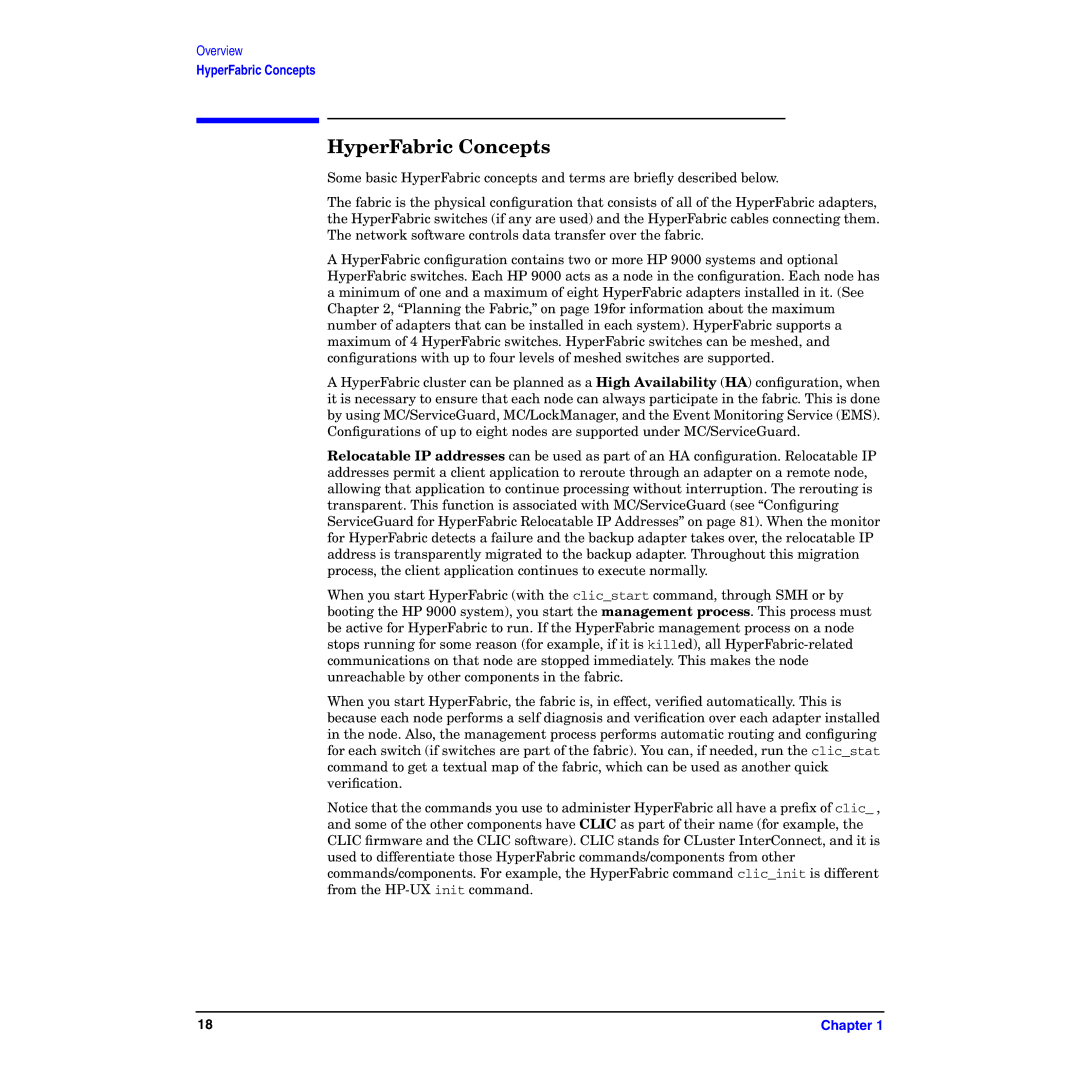
Overview
HyperFabric Concepts
HyperFabric Concepts
Some basic HyperFabric concepts and terms are briefly described below.
The fabric is the physical configuration that consists of all of the HyperFabric adapters, the HyperFabric switches (if any are used) and the HyperFabric cables connecting them. The network software controls data transfer over the fabric.
A HyperFabric configuration contains two or more HP 9000 systems and optional HyperFabric switches. Each HP 9000 acts as a node in the configuration. Each node has a minimum of one and a maximum of eight HyperFabric adapters installed in it. (See Chapter 2, “Planning the Fabric,” on page 19for information about the maximum number of adapters that can be installed in each system). HyperFabric supports a maximum of 4 HyperFabric switches. HyperFabric switches can be meshed, and configurations with up to four levels of meshed switches are supported.
A HyperFabric cluster can be planned as a High Availability (HA) configuration, when it is necessary to ensure that each node can always participate in the fabric. This is done by using MC/ServiceGuard, MC/LockManager, and the Event Monitoring Service (EMS). Configurations of up to eight nodes are supported under MC/ServiceGuard.
Relocatable IP addresses can be used as part of an HA configuration. Relocatable IP addresses permit a client application to reroute through an adapter on a remote node, allowing that application to continue processing without interruption. The rerouting is transparent. This function is associated with MC/ServiceGuard (see “Configuring ServiceGuard for HyperFabric Relocatable IP Addresses” on page 81). When the monitor for HyperFabric detects a failure and the backup adapter takes over, the relocatable IP address is transparently migrated to the backup adapter. Throughout this migration process, the client application continues to execute normally.
When you start HyperFabric (with the clic_start command, through SMH or by booting the HP 9000 system), you start the management process. This process must be active for HyperFabric to run. If the HyperFabric management process on a node stops running for some reason (for example, if it is killed), all
When you start HyperFabric, the fabric is, in effect, verified automatically. This is because each node performs a self diagnosis and verification over each adapter installed in the node. Also, the management process performs automatic routing and configuring for each switch (if switches are part of the fabric). You can, if needed, run the clic_stat command to get a textual map of the fabric, which can be used as another quick verification.
Notice that the commands you use to administer HyperFabric all have a prefix of clic_ , and some of the other components have CLIC as part of their name (for example, the CLIC firmware and the CLIC software). CLIC stands for CLuster InterConnect, and it is used to differentiate those HyperFabric commands/components from other commands/components. For example, the HyperFabric command clic_init is different from the
18 | Chapter 1 |
